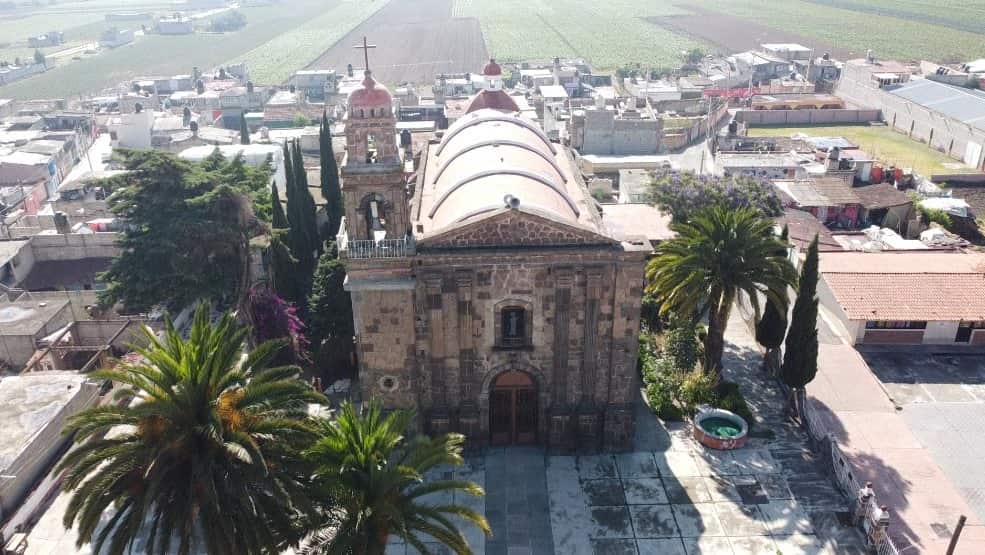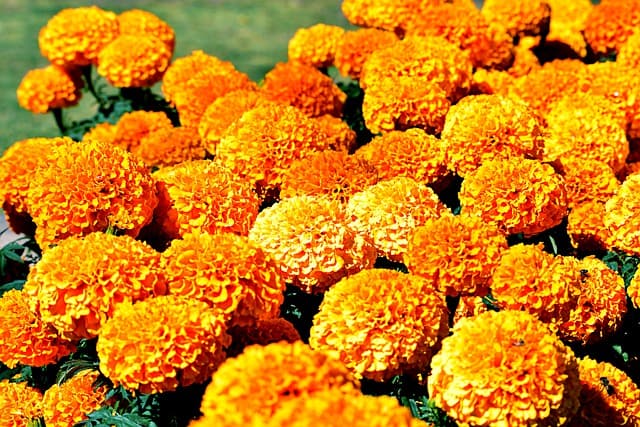San Francisco Putla, a scent of cempaxúchitl in the State of Mexico
Enjoying traditions, landscapes, and typical food is possible in this magical place called San Francisco Putla in the State of Mexico.

Less than an hour from the center of Toluca, State of Mexico, among the constant sepia Mexican landscapes, the tired ground, and chiaroscuro streets, you begin to notice an infinite blue sky, dreamy. It is San Francisco Putla. At the bottom, multicolored and vivid shades that decorate sowings of huge varieties of flowers that the rich soil of this region of the most populous entity of the country, and that housed, according to the National Institute of Statistics and Geography (Inegi), a total of 16 million 992 thousand 418, at least in 2020.
"The tradition of planting vegetables and whatever the land gives us comes from my great-grandparents. We do not have exact data, but it is clear that we are a population that predominantly focuses on planting, harvesting, and marketing, especially the marigold and cloud flower; the traditional ones for the Day of the Dead. Even the cloud flower is harvested all year round," says Emanuel Solano, who is 20 years old and feels proud of his heritage and is determined to make this activity compatible with the agricultural engineering degree he is studying at the Autonomous University of the State of Mexico.
Always invincible
Emanuel perfectly keeps the memories of when he was 5 years old.
"We have gone from generation to generation. Since my great-grandparents, this Day of the Dead season, they founded a flower market with the crops that came from the land. San Francisco Putla has 4,200 inhabitants, and 2,000 people are dedicated to the land. That is why it is important for us to preserve our legacy, to be seen, and, above all, to make it clear that our cempasúchil is 100% Mexican. That, in these times, gives it a great value".
The fear is clear and increasingly evident: Mexican producers are afraid of China because, since 1960, Mexican companies have controlled the cempasúchil agribusiness. They began to move their production to countries such as China, Peru, and India. The low price of labor is more abundant in those regions of the world. For that reason, "we encourage people to buy national flowers. Even if those from other countries are cheaper, they will never perform as well. It has been proven that these imported plants do not last. Their seed is modified, which makes them more striking in the first instance, but also makes their durability short.
"Even we take care that the fertilizers we use do not damage the ozone layer. International companies pay little attention to this issue," says Emanuel, who adds concern about the impact of climate change. "It has affected us a lot. For the past few years, the colder weather has been more intense, our crops have frozen and we have even had total losses. Production has also dropped. Climate change has been affecting us a lot, but we will not let our guard down. The quality of our flower is the seal of guarantee of a tradition that should not end".

Love for the land and Mexico
The Ministry of Agriculture and Rural Development states that there is "archeological evidence indicating that the marigold was domesticated and used in Mesoamerica 3000 thousand years ago. It is a plant endemic to the American continent and is composed of 58 species, 35 of which live in Mexico. The word comes from two nouns: sempôwal, which means 20 (or many), and xôchitl, which is a flower. Its translation would be "flower of 20″.
Legend has it that Xóchitl and Huitzilin were in love since they were children and that in the afternoons they climbed the mountain dedicated to Tonatiuh, the Aztec god of the sun, and offered him bouquets. But one day war broke out and Huitzilin went to fight to defend the Aztec lands and died. Shattered with grief, Xochitl asked the god Tonatiuh to free her from her suffering and reunite her with her beloved.
The sun god fulfilled the request, let his rays fall on Xochitl, and she was transformed into a bright yellow flower. Then a hummingbird landed in the center of the flower and it opened its 20 petals releasing an intense aroma. Following Tonatiuh's command, the Aztec couple's love will remain as long as there are hummingbirds and cempasúchil flowers in the Mexican fields.
Today its scent signifies the Day of the Dead. For some the calling, for others the being and being with their departed. But whatever the tradition, the marigold is synonymous with the smell and taste of Mexico. Of the orange color seal of which the tombs of the whole country are dyed and, undoubtedly, of guarantee for places like San Francisco Putla where whatever the circumstance, they will always be at the foot of the cannon.
"Last year, because of the pandemic we had to reduce production to 50%. This, who dared to cultivate, because Putla should not decline. It is a way of making it clear that we do not want to lose our love for the land. To this, our land in Mexico," concludes Emanuel Solano in the interview with Once Noticias.
How to get to San Francisco Putla?
It is located 25.5 km. from the city of Toluca, driving on the Toluca-Tenango del Valle highway to San Francisco Putla. At the turnoff to San Miguel Balderas, you will find the bridge that crosses the highway to Ixtapan de la Sal, continuing on this road you will find the plantation.
What to do?
Visit the flower fields. Stroll through the flower market during the Day of the Dead season. Enjoy the traditional barbacoa de hoyo, pulque, and sweet pumpkin, harvested from local crops.




